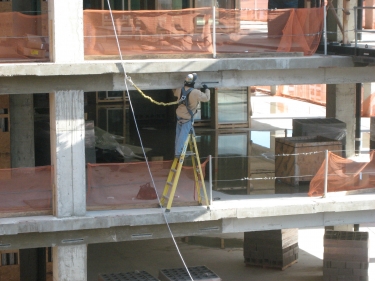 Since falls are one of the most commonly reported causes of on-the-job injuries, OSHA requires employers to provide fall protections and preventions in many different ways. These falls can result in serious injuries or even deaths if not properly guarded against. Therefore, employers who fail to follow OSHA standards are liable for any serious harm that results from a worker’s fall.
Since falls are one of the most commonly reported causes of on-the-job injuries, OSHA requires employers to provide fall protections and preventions in many different ways. These falls can result in serious injuries or even deaths if not properly guarded against. Therefore, employers who fail to follow OSHA standards are liable for any serious harm that results from a worker’s fall.
The specific guidelines for fall prevention and protection vary from industry to industry. They can be found on this OSHA web page dedicated to the subject, including the elevations at which fall protections become necessary and the equipment that should be used to protect employees while they are working. There are some guidelines that apply to all industries, and it is recommended that the maximum possible set of protections be applied regardless of one’s specific industry regulations.
The most basic set of fall protection standards mandate an employer’s responsibility to train workers properly in a language they can understand, and to remove all known dangers. These are ideas that should apply to all areas of injury prevention. More specific fall protection instructions include providing a clean, dry floor whenever possible and handrails or guardrails near all steps and raised platforms.
Additionally, OSHA’s fall protection webpage provides examples of what can happen if specified guidelines are ignored or carried out improperly. One particularly gruesome report details the specifics of “Engulfment in a Sugar Hopper,” while others describe similarly dangerous situations such as “Material Hoist Collapse” or “Falling Off Ladders.” It also contains information about fall protection broken down into construction and non-construction industry resources, and offers advice for training.[/fusion_builder_column][/fusion_builder_row][/fusion_builder_container]








